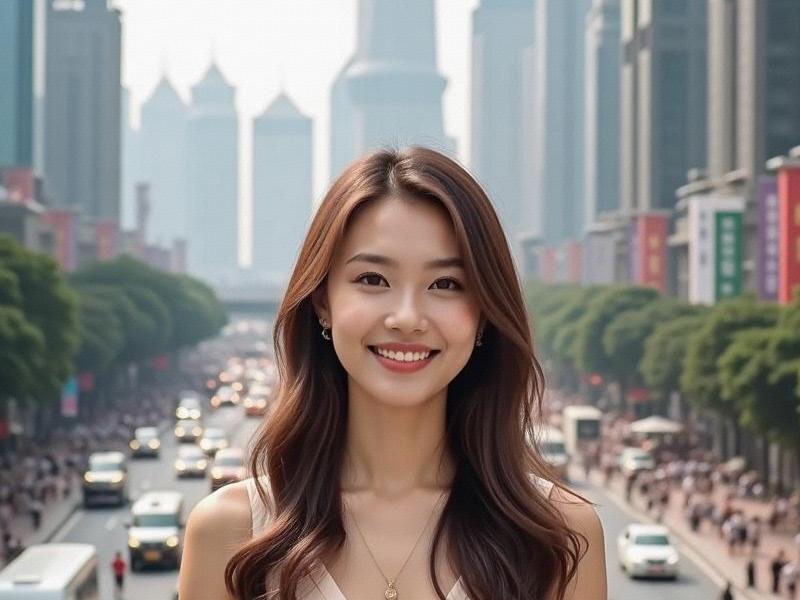Shanghai's Beauty Revolution: How the City's Women Are Redefining Chinese Aesthetics
⏱ 2025-06-21 00:35 🔖 爱上海同城论坛
📢0℃

Section 1: The Shanghai Beauty DNA
Historical Context:
• 1920s: Qipao elegance and Western cosmetics fusion
• 1950s-70s: Revolutionary austerity period
• 1980s: Permed hair and colorful makeup liberation
• 2000s: Korean beauty wave adoption
• 2020s: "New Shanghai Style" emergence
Section 2: The Beauty Industrial Complex
Market Breakdown (2025):
• Skincare: ¥185 billion
• Makeup: ¥92 billion
• Cosmetic procedures: ¥68 billion
• Beauty tech: ¥45 billion
上海龙凤千花1314
Key Industry Players:
• Local brands (37% market share)
• International luxury (43%)
• Indie startups (20%)
Section 3: Digital Transformation
Tech Disruptions:
• AI skin diagnosis (92% accuracy)
• AR makeup try-ons (180M users)
• 3D printed cosmetics (34 brands)
• Blockchain authenticity systems
Influencer Economy:
上海贵族宝贝龙凤楼 • Top 50 beauty KOLs generate ¥6.8B annually
• Livestream beauty sales: ¥120B in 2024
• Virtual influencers: 42% engagement rate
Section 4: Cultural Contradictions
Survey Findings:
• 72% feel beauty pressure but reject conformity
• 68% view appearance as career capital
• 55% practice "situational beauty" strategies
• 89% customize hybrid beauty routines
Section 5: Emerging Trends
Progressive Movements:
上海贵族宝贝自荐419 • "Bare Face Fridays" workplace initiative
• Sustainable beauty collectives
• Heritage ingredient revival
• Gender-fluid cosmetics
Voices of Shanghai
"Shanghai women have mastered aesthetic alchemy," notes cultural anthropologist Dr. Li Wen. "They blend French sophistication, Korean skincare science, and Chinese aesthetic principles into something uniquely contemporary yet rooted in local identity."
Industry insiders reveal:
• Emotion-responsive makeup
• Biodegradable glitter technology
• AI-powered custom fragrance systems
• Climate-adaptive skincare lines
Shanghai 2040: The Vertical City Revolution Redefining Urban Living"Neo-Cheongsam Revolution: Shanghai's Tech-Infused Femininity Reshaping Global Beauty Norms"The Shanghai Woman Phenomenon: How China's Most Cosmopolitan Women Are Shaping Global Perceptions of Chinese Femininity【城市镜像】从石库门到陆家嘴:上海女性的十二时辰Shanghai 2040: Building the Sustainable Megacity of TomorrowThe Cultural Awakening: How Shanghai is Redefining China's Creative EconomyThe Yangtze River Delta Megaregion: How Shanghai and Its Neighbors Are Creating China's Most Dynamic Economic Zone【城市肖像】上海女性的千面风华:从弄堂旗袍到数字游民"Circuitboard Qipao: How Shanghai's Women Are Programming Tomorrow's Beauty Standards"Neon Renaissance: How Shanghai's Entertainment Clubs Are Writing the Future of Urban Nightlife
【水岸重生录】苏州河下游的沪苏双城实验【夜上海浮世绘】"百乐门"传奇:探秘民国第一舞厅的世纪沉浮【流金岁月】上海名媛的世纪审美革命【时代镜像】上海女子的千面风华:从月份牌美人到数字缪斯的百年嬗变"的格式要求
- 标题、关键词、描述、内容四部分缺一不可
- 内容要体现新闻专业性
- 需要包含上海及周边元素
- 文章要有深度和可读性
3. 注意事项:
- 避免生成调查报告
- 保持新闻的客观性和专业性
- 可以适当融入历史元素
- 确保内容真实可信
- 从文化、社会、经济等角度切入
- 注意上海与周边区域的联动关系
以下是为您准备的上海及周边主题深度报道:【城市记忆】亭子间与智慧社区:一个国际大都市的市井基因解码【摩登密码】从月份牌到元宇宙:上海女性的百年形象进化论【夜上海进化论】从百乐门到量子酒吧:解码都市夜生活的文化基因【大上海都市圈进行时】2025沪苏浙皖同城化生活全景图【魔都密码】从外滩到元宇宙:解码上海城市基因的五重奏

